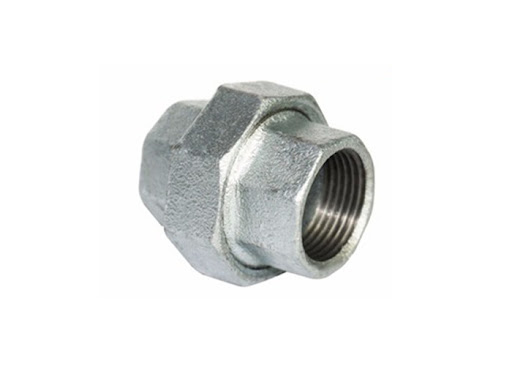What Is Pipe Unions?

Pipe union is a fitting that allows for two pipes to be joined together in a way that one can easily be removed without disturbing the other. Union fittings are typically used with copper, steel, or plastic pipes.
The Correct Way To Install a Union Pipe Fittings?
Union pipe fittings, also known as “pipe unions” or just a union, are two pipes that join together with one male and one female end. The type of fitting used depends on the size of the pipe you need to connect; for example if it is ¾ inch (or 19mm) in diameter then a nipple and female threaded cap would work best.
The process to connect the two pipes is simple: you place both ends of the union fitting onto either side of your pipe and tighten it in a clockwise direction until it cannot be tightened any more. To ensure that no water can escape during use, we recommend covering each end with PTFE tape.
Once the union is in place, you will need to connect your pipes. For a simple connection, use a pipe nipple and male threaded cap on one side and then either another female threaded cap or coupling (which are both unions). Both of these connections can be tightened clockwise until they cannot be any more. On the other end of the pipe, you can use a coupling to connect the two pipes together.
The Difference Between Union And Coupling
A Union is composed of male thread at one end, female threaded cap or nipple on the other; while a coupling consists only of male threads that are screwed into both ends of lengths of pipe.
Union fittings provide for a quick and simple connection for pipes that are the same diameter while couplings provide a more secure, permanent seal.
Types Of Union Pipes
Unions come in three main types: threaded unions, compression unions, and push-fit (or flare) unions.
1. Threaded Unions:
Threaded unions have male threads on both ends of the fitting which screw into female threads on either end of the connecting pipe.
2. Compression Unions:
Compression unions use an O-ring gasket to create pressure between the two pieces which creates a tight seal when tightened down.
3. Flare Unions:
The last type is called push-fit or flare unions where there are no threads involved at all; instead you simply slide one piece over another until they simply push together.
Advantages:
Flexibility: Allows you to disconnect and reconnect pipes without having to shut off the water. An example of this would be a scenario where your washing machine leaks over into the laundry room, but it's not constantly leaking so you don't need to always have access for repairs; just when there is an issue with it. With a union, you can disconnect the pipe and fix it.
Durability: There are two pieces of metal that connect with a rubber gasket that creates an air tight seal on both ends of the pipes so they won't leak when disconnected for repairs or another reason.
The only way to get them apart is by turning a nut inside the pipe that unscrews all the way to the end where it meets with a male or female coupling.
Applications:
Union pipe fittings are used in various applications. For example, they can be found on small fire hydrants and above-ground water mains. Pipe unions have the ability to connect two pipes together with a threaded connection that is less bulky than an elbow or tee joint. Union fittings also come with valves at either end of the connection that let you turn the water on and off.
